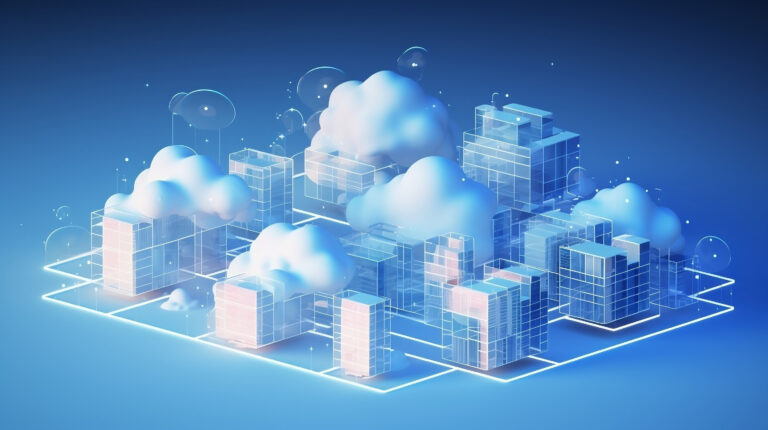Hybrid and remote work have become the norm in today’s business landscape. More and more professionals—especially younger, tech-savvy workers—are shifting to remote roles. However, businesses are increasingly facing challenges in supporting remote employees due to fragmented or outdated IT systems. At the same time, companies need to ensure seamless productivity and airtight security across distributed teams. This is where managed IT services for the remote workforce become critical.
Managed IT services involve a third-party provider, or Managed Service Provider (MSP), taking over the management and maintenance of a company’s IT infrastructure and operations, such as network monitoring, cybersecurity, and help desk support. This outsourcing allows businesses to benefit from expert IT management, predictable costs, improved efficiency, and the freedom to focus on their core operations. In this blog, we explore why remote workforce IT support is essential in today’s remote-first world.
The Shift to Remote Workforces
Since the COVID-19 pandemic, remote work has surged across industries. Skilled professionals from every sector are demanding greater flexibility, and companies are adapting quickly to stay competitive. As this model becomes more permanent, enterprises must ensure their remote environments are secure, efficient, and scalable.
With the rise in remote work, managed IT services are becoming essential for managing virtual workforces effectively. They help eliminate infrastructure issues and enable organizations to support their employees no matter where they’re located.
Learn About Our Managed IT, Microsoft 365, and Consulting Services
How the Pandemic Accelerated Remote Adoption
The COVID-19 crisis reshaped global work culture, forcing businesses to shift to remote operations almost overnight. What began as a survival tactic has since evolved into a sustainable, long-term strategy. Many organizations turned to managed IT services for the remote workforce to maintain business continuity, mitigate security risks, and improve collaboration.
This digital shift underscored the need for scalable IT frameworks that can support distributed teams without compromising on productivity or protection. Companies that invested early in strong IT infrastructure and trusted MSPs built the resilience required to sustain hybrid and remote models beyond the pandemic.
Current Trends: Hybrid Setups and Global Talent Pools
Remote work has evolved into hybrid setups that combine the flexibility of remote environments with the structure of in-office collaboration. Companies are also tapping into global talent pools, hiring across time zones and geographies to access the best minds.
However, managing a distributed workforce comes with its own challenges. To remain efficient and competitive, organizations need secure, scalable, and reliable IT support. Solutions like best managed IT services for remote employees enable seamless collaboration, secure access, and business continuity. Providers like TrnDigital specialize in equipping remote teams with the tools and infrastructure needed to thrive in a borderless economy.
Productivity Challenges for Remote Teams
While remote work promotes flexibility and autonomy, it can also hinder productivity when not supported by a strong IT foundation. Without centralized helpdesks or real-time support, employees may experience prolonged downtime caused by technical glitches. Shadow IT—unauthorized tools and software adopted by employees—can lead to security gaps and inefficiencies. Communication issues and disjointed workflows can further slow progress.
Our support extends to every city
Get IT support near you!
This is where remote workforce IT support proves invaluable. Managed IT providers offer proactive monitoring, fast troubleshooting, and standardized collaboration platforms to keep employees connected, secure, and productive.
Security Risks in Remote Work
The expansion of remote work increases cybersecurity exposure. Common risks include phishing attacks, ransomware, and the use of unsecured networks or personal devices that fall outside of corporate firewalls. These vulnerabilities threaten data privacy and raise compliance issues.
Unmanaged cloud applications and remote access tools can also compromise company data. Furthermore, adhering to frameworks such as HIPAA, GDPR, and PCI DSS becomes more difficult without structured governance.
Organizations can no longer afford weak security measures. Ensuring security for the remote workforce with managed IT means deploying endpoint protection, multi-factor authentication, real-time threat detection, and strong data governance practices to keep information secure and compliant.
How Managed IT Services Address These Challenges
Advanced managed IT services go beyond basic support. They offer comprehensive solutions that help companies run lean, secure, and scalable operations in hybrid and remote models. Key service areas include:
- Proactive Monitoring & Support
24/7 helpdesk access, remote troubleshooting, and reduced downtime keep business operations running smoothly. - Cybersecurity Solutions
Endpoint protection, multi-factor authentication, firewalls, and real-time threat detection defend against modern cyber risks. - Cloud Management
Secure cloud migration, optimization, and disaster recovery plans ensure uninterrupted remote access. - Collaboration Tools
Seamless integration of platforms like Microsoft 365, Teams, and secure file-sharing tools support remote communication. - Compliance & Governance
MSPs help maintain compliance through regular audits, policy enforcement, and data protection aligned with industry standards.
Key Benefits of Managed IT for Remote Workforces
By partnering with the best managed IT service providers in the USA, businesses can scale remote operations efficiently and securely. Instead of building in-house IT departments, companies benefit from expert support tailored for distributed environments.
- Cost efficiency compared to hiring full-time IT staff
- Scalable infrastructure that grows with your workforce
- Improved employee satisfaction through seamless digital experiences
- Stronger security and compliance frameworks in place
With the right partner, managed IT becomes a growth enabler, transforming IT from a cost center into a competitive advantage.
Best Practices for Partnering with an MSP
Selecting the right MSP starts with understanding your organization’s current IT gaps and future needs. Businesses should look for providers that offer:
- Round-the-clock support availability
- Security-first mindset with compliance expertise
- Strategic alignment with your digital transformation goals
Managed service providers in Massachusetts, like TrnDigital, are recognized for delivering a blend of local knowledge and global IT standards. Choosing a trusted partner ensures that your remote or hybrid model stays efficient, secure, and scalable.
Conclusion
Remote work is no longer a temporary fix—it’s the foundation of the modern workforce. As organizations strive to balance flexibility, productivity, and security, managed IT services for the remote workforce become indispensable.
With proactive support, built-in cybersecurity, cloud optimization, and governance tools, the best managed IT service providers act as true strategic partners. Whether you’re building global teams or enabling hybrid collaboration, your IT foundation will determine your long-term success. Contact TrnDigital today to empower your distributed workforce with secure, reliable, and scalable IT solutions that help you grow confidently.




